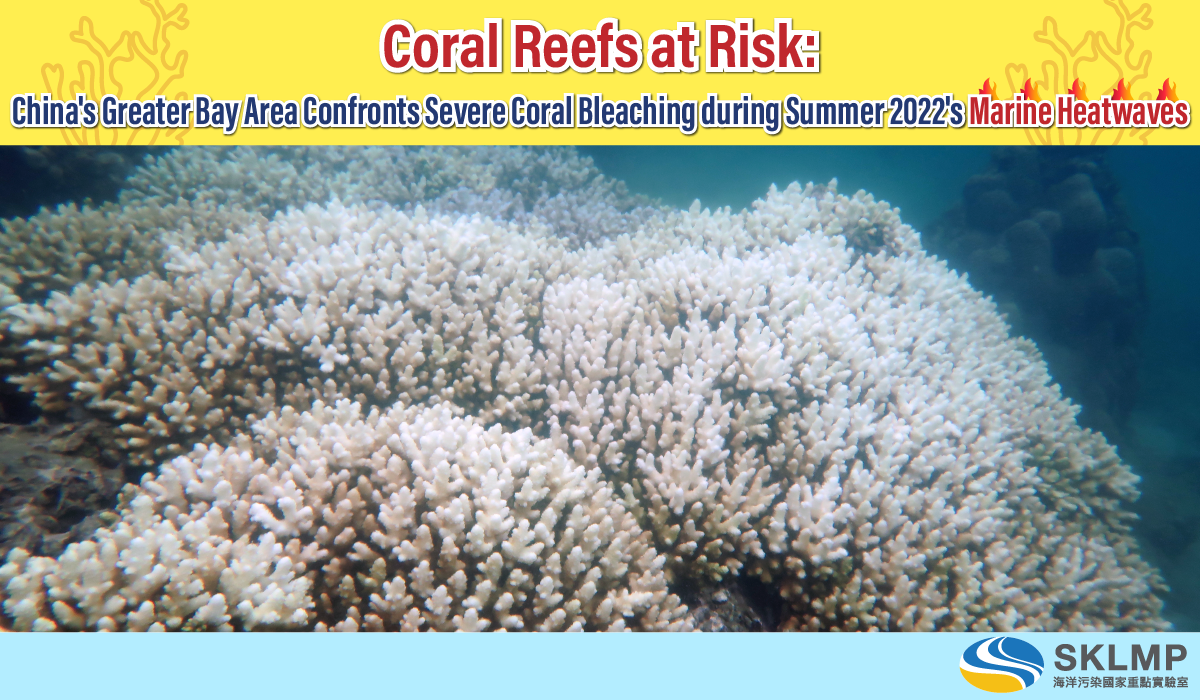Coral Reefs at Risk: China's Greater Bay Area Confronts Severe Coral Bleaching during Summer 2022's Marine Heatwaves

The long-term effects of coral bleaching can lead to coral death , resulting in degradation of the ecosystem and loss of biodiversity in the region. Coral bleaching events have become a global environmental issue. Despite being commonly regarded as coral thermal refuges due to their high latitude distribution, coral communities in China's Greater Bay Area (GBA) experienced an unprecedented coral bleaching event in the scleractinian coral communities located in the northern South China Sea (nSCS) from July to August 2022.
SKLMP Member, Prof. Jianwen Qiu and SKLMP Associate Director Prof. Leo Chan, conducted field surveys at six investigation sites in the three main coral distribution areas of the GBA. Their research findings have been published in the Marine Environmental Research. The study indicates that coral bleaching was observed at all investigation sites, with the bleaching being more severe in the shallow waters (1-3 meters) compared to the deeper waters (4-6 meters). By analysing oceanographic data, marine heatwaves (MHWs) were detected during the summer in the three surveyed areas, with mean intensities between 1.62 and 1.97 °C higher than the maximum mean monthly temperature and durations between 5 and 22 days. Histological oceanographic data further suggested a significant increase in the frequency, intensity, and total days of MHWs in 2022 compared to previous years. This impacted the structure of subtropical coral communities in the nSCS and weakened their potential as thermal refugia.
More information: https://doi.org/10.1016/j.marenvres.2023.106044